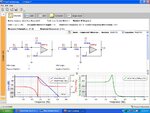uoficowboy
Full Member level 3

- Joined
- Apr 4, 2009
- Messages
- 169
- Helped
- 6
- Reputation
- 12
- Reaction score
- 5
- Trophy points
- 1,298
- Location
- Seattle, Wa, USA
- Activity points
- 2,964
Hi - I see that there are quite a few filter design software packages out there.
Can anybody recommend one or compare some of them for me? I'm looking for software that will help me design low pass filters for data acquisition systems.
Thanks!
Can anybody recommend one or compare some of them for me? I'm looking for software that will help me design low pass filters for data acquisition systems.
Thanks!




